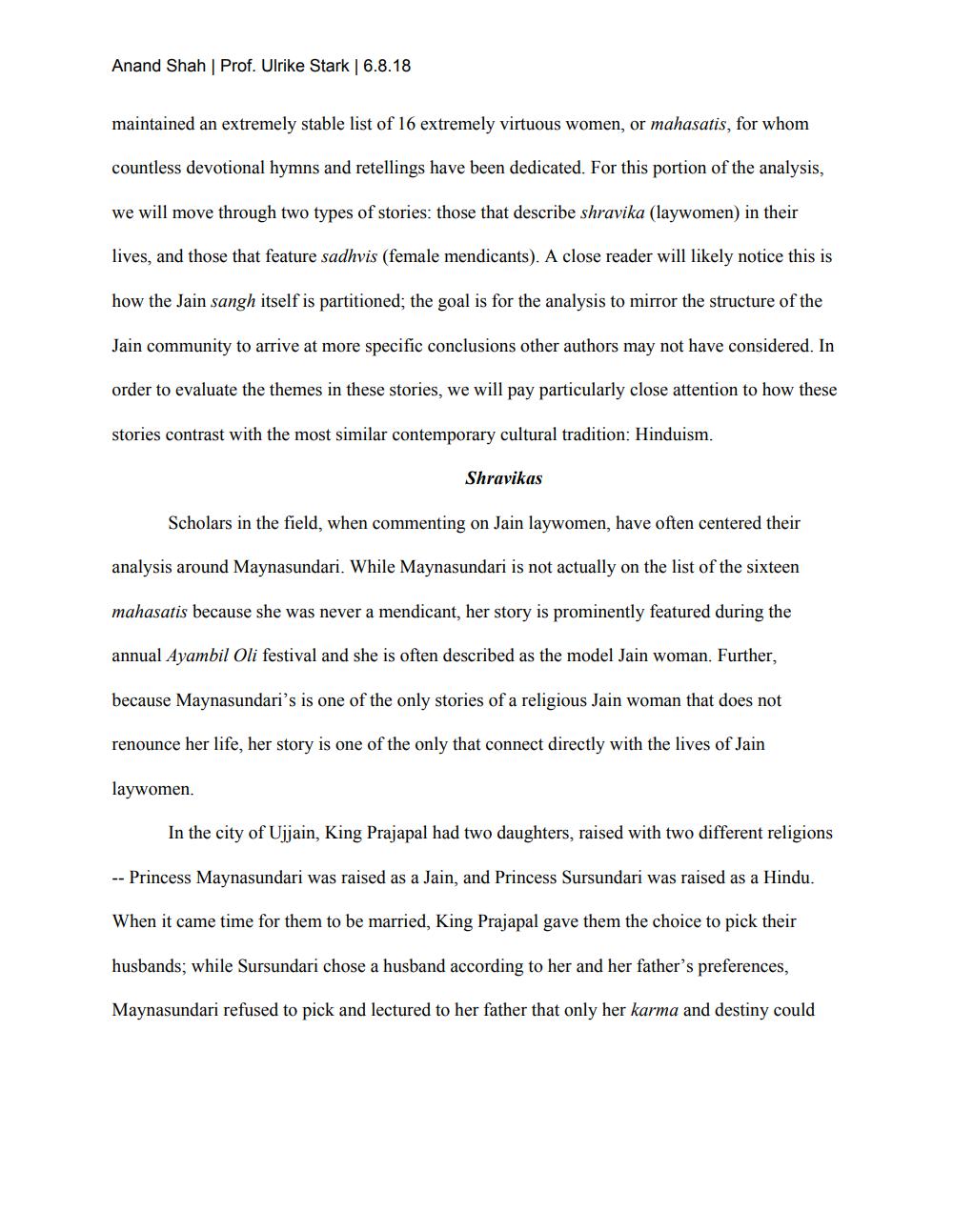Book Title: Jainism Parity And Patriarchy Author(s): Anand Shah Publisher: Anand Shah View full book textPage 3
________________ Anand Shah | Prof. Ulrike Stark | 6.8.18 maintained an extremely stable list of 16 extremely virtuous women, or mahasatis, for whom countless devotional hymns and retellings have been dedicated. For this portion of the analysis, we will move through two types of stories: those that describe shravika (laywomen) in their lives, and those that feature sadhvis (female mendicants). A close reader will likely notice this is how the Jain sangh itself is partitioned; the goal is for the analysis to mirror the structure of the Jain community to arrive at more specific conclusions other authors may not have considered. In order to evaluate the themes in these stories, we will pay particularly close attention to how these stories contrast with the most similar contemporary cultural tradition: Hinduism. Shravikas Scholars in the field, when commenting on Jain laywomen, have often centered their analysis around Maynasundari. While Maynasundari is not actually on the list of the sixteen mahasatis because she was never a mendicant, her story is prominently featured during the annual Ayambil Oli festival and she is often described as the model Jain woman. Further, because Maynasundari's is one of the only stories of a religious Jain woman that does not renounce her life, her story is one of the only that connect directly with the lives of Jain laywomen. In the city of Ujjain, King Prajapal had two daughters, raised with two different religions -- Princess Maynasundari was raised as a Jain, and Princess Sursundari was raised as a Hindu. When it came time for them to be married, King Prajapal gave them the choice to pick their husbands; while Sursundari chose a husband according to her and her father's preferences, Maynasundari refused to pick and lectured to her father that only her karma and destiny couldPage Navigation
1 2 3 4 5 6 7 8 9 10 11 12 13 14 15 16 17 18
